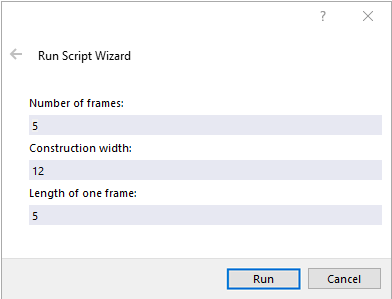In this chapter, two further advantages of RFEM 6 are shown. The program provides the option to enter models through parametrization; for example, geometries or loads, and to simplify the writing of your own scripts.
Parametrization
The parameterized input allows you to enter the model and load data in such a way that they depend on certain parameters; for example, lengths, widths, or surface loads. You can define them in the Global Parameters list that you can open using the
![]() button in the toolbar of the table.
button in the toolbar of the table.
In the corresponding text box, you can specify the parameters in a formula to determine a numerical value. A new formula can be created in the table using the
![]() button and in dialog boxes using the
button and in dialog boxes using the
![]() button next to the text box. If you later change the global parameter, the values of all formulas using the parameter will be adjusted. This allows you to quickly generate the geometry of a new model that is similar to an old model, for example. The changes are also adopted in the printout report.
button next to the text box. If you later change the global parameter, the values of all formulas using the parameter will be adjusted. This allows you to quickly generate the geometry of a new model that is similar to an old model, for example. The changes are also adopted in the printout report.
You can find further information on parameterized input in the Online Manual for RFEM 6.
Scripting
RFEM includes a powerful scripting language that allows you to create, modify, or delete the topology, load cases, and loads. The scripting language JavaScript is used to create your own scripts. The
![]() button opens the script manager, where you can create and edit the scripts. If you run a script, you can define parameters for generating the model, for example.
button opens the script manager, where you can create and edit the scripts. If you run a script, you can define parameters for generating the model, for example.
There is a special webinar about creating and using scripts and blocks on the website. You can also find further information in the RFEM 6 manual.
However, creating, opening, or closing files, starting the calculation, or displaying the results, as well as communicating with other applications, is not possible using such scripts. For this, we recommend the WebService.
